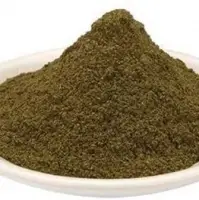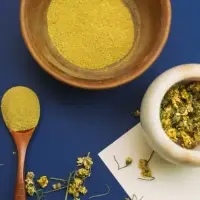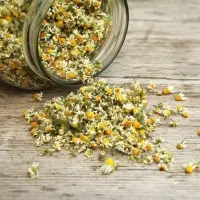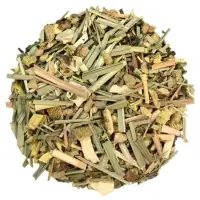

We offer a range of high-quality inorganic chemicals, including Sodium Hydroxide (Caustic Soda), Sulfuric Acid, Phosphoric Acid, and Ammonia for industrial and agricultural use. Our products also include Aluminum Oxide, Calcium Carbonate, Potassium Chloride, Magnesium Sulfate, Zinc Oxide, and Hydrogen Peroxide, serving industries like manufacturing, agriculture, and water treatment. All products meet international quality standards for reliability and performance.

We provide a wide range of high-quality organic chemicals, including aromatic hydrocarbons such as benzene, toluene, and xylene; alcohols like ethanol and isopropyl alcohol; and acids including acetic acid and formic acid. Our agrochemicals, including pesticides, herbicides, and fungicides, support agriculture globally. We also offer polymers like polyethylene and polypropylene, essential for plastic production. Additionally, we supply synthetic dyes, essential oils such as eucalyptus oil and menthol, fatty acids like oleic and stearic acid, and solvents including acetone and methanol. All of our products are sourced from reliable suppliers and meet international quality standards, ensuring consistency and excellence for various industries.
Organic and inorganic chemicals, calcium carbonate all kinds of salts such as rock, himalayan, bathing, table, black, kosher, flake, red hawaiian and pickling salt etc. petrochemicals (polyethylene, polypropylene and polymers etc.), agrochemicals ( fertilizers such as dap, urea 46 etc.), pesticides and herbicides etc.), agricultural foods & commodities such as wheat flour, millets, other flours, onion , potato, tomato and apples, banana, guava, mango, rice bran, rice husk, lentils and pulses, non basmati & basmati rice items such as carpets and rugs used in home and offices, handicraft items and paper cups and corrugated boxes..
Stinging nettle redirects here. For the Australian plant, see Urtica incisa. For other plants that sting, see Stinging plant with stinging hairs. Urtica dioica, often known as common nettle, stinging nettle (although not all plants of this species sting) or nettle leaf, or just a nettle or stinger, is a herbaceous perennial flowering plant in the family Urticaceae. Originally native to Europe, much of temperate Asia and western North Africa, it is now found worldwide, including New Zealand and North America. The species is divided into six subspecies, five of which have many hollow stinging hairs called trichomes on the leaves and stems, which act like hypodermic needles, injecting histamine and other chemicals that produce a stinging sensation upon contact (contact urticaria, a form or contact dermatitis). The plant has a long history of use as a source for traditional medicine, food, tea, and textile raw material in ancient societies.
Stinging nettle redirects here. For the Australian plant, see Urtica incisa. For other plants that sting, see Stinging plant Plants with stinging hairs. Urtica dioica, often known as common nettle, stinging nettle (although not all plants of this species sting) or nettle leaf, or just a nettle or stinger, is a herbaceous perennial flowering plant in the family Urticaceae. Originally native to Europe, much of temperate Asia and western North Africa, it is now found worldwide, including New Zealand and North America. The species is divided into six subspecies, five of which have many hollow stinging hairs called trichomes on the leaves and stems, which act like hypodermic needles, injecting histamine and other chemicals that produce a stinging sensation upon contact contact urticaria a form or contact dermatitis). The plant has a long history of use as a source for traditional medicine, food, tea, and textile raw material in ancient societies.
Stinging nettle redirects here. For the Australian plant, see Urtica incisa. For other plants that sting, see Stinging plant Plants with stinging hairs. Urtica dioica, often known as common nettle, stinging nettle (although not all plants of this species sting) or nettle leaf, or just a nettle or stinger, is a herbaceous perennial flowering plant in the family Urticaceae. Originally native to Europe, much of temperate Asia and western North Africa, it is now found worldwide, including New Zealand and North America. The species is divided into six subspecies, five of which have many hollow stinging hairs called trichomes on the leaves and stems, which act like hypodermic needles, injecting histamine and other chemicals that produce a stinging sensation upon contact (contact urticaria, a form or contact dermatitis). The plant has a long history of use as a source for traditional medicine, food, tea, and textile raw material in ancient societies.
Matricaria chamomilla (synonym: Matricaria recutita), commonly known as chamomile (also spelled camomile), Italian camomilla, German chamomile, Hungarian chamomile (kamilla), wild chamomile or scented mayweed, is an annual plant of the composite family Asteraceae. M. chamomilla is the most popular source of the herbal product chamomile, although other species are also used as chamomile.
Matricaria chamomilla (synonym: Matricaria recutita), commonly known as chamomile (also spelled camomile), Italian camomilla, German chamomile, Hungarian chamomile (kamilla), wild chamomile or scented mayweed, is an annual plant of the composite family Asteraceae. M. chamomilla is the most popular source of the herbal product chamomile, although other species are also used as chamomile.
Matricaria chamomilla (synonym: Matricaria recutita), commonly known as chamomile (also spelled camomile), Italian camomilla, German chamomile, Hungarian chamomile (kamilla), wild chamomile or scented mayweed, is an annual plant of the composite family Asteraceae. M. chamomilla is the most popular source of the herbal product chamomile, although other species are also used as chamomile.
Centaurea cyanus, commonly known as cornflower or bachelor's button, is an annual flowering plant in the family Asteraceae, native to Europe. In the past it often grew as a weed in cornfields (in the broad sense of corn, referring to grains, such as wheat, barley, rye, or oats), hence its name. It is now endangered in its native habitat by agricultural intensification, particularly over-use of herbicides, destroying its habitat. It is also, however, through introduction as an ornamental plant in gardens and a seed contaminant in crop seeds, now naturalised in many other parts of the world, including North America and parts of Australia.
Centaurea cyanus, commonly known as cornflower or bachelor's button, is an annual flowering plant in the family Asteraceae, native to Europe. In the past it often grew as a weed in cornfields (in the broad sense of corn, referring to grains, such as wheat, barley, rye, or oats), hence its name. It is now endangered in its native habitat by agricultural intensification, particularly over-use of herbicides, destroying its habitat. It is also, however, through introduction as an ornamental plant in gardens and a seed contaminant in crop seeds, now naturalised in many other parts of the world, including North America and parts of Australia.
Centaurea cyanus, commonly known as cornflower or bachelor's button, is an annual flowering plant in the family Asteraceae, native to Europe. In the past it often grew as a weed in cornfields (in the broad sense of corn, referring to grains, such as wheat, barley, rye, or oats), hence its name. It is now endangered in its native habitat by agricultural intensification, particularly over-use of herbicides, destroying its habitat. It is also, however, through introduction as an ornamental plant in gardens and a seed contaminant in crop seeds, now naturalised in many other parts of the world, including North America and parts of Australia.
Centaurea cyanus, commonly known as cornflower or bachelor's button, is an annual flowering plant in the family Asteraceae, native to Europe. In the past it often grew as a weed in cornfields (in the broad sense of corn, referring to grains, such as wheat, barley, rye, or oats), hence its name. It is now endangered in its native habitat by agricultural intensification, particularly over-use of herbicides, destroying its habitat. It is also, however, through introduction as an ornamental plant in gardens and a seed contaminant in crop seeds, now naturalised in many other parts of the world, including North America and parts of Australia.
Citronella grass (Cymbopogon nardus and Cymbopogon winterianus) grow to about 2 m (6.6 ft) and have magenta-colored base stems. These species are used for the production of citronella oil, which is used in soaps, as an insect repellent (especially mosquitoes) in insect sprays and candles, and in aromatherapy. The principal chemical constituents of citronella, geraniol and citronellol, are antiseptics, hence their use in household disinfectants and soaps. Besides oil production, citronella grass is also used for culinary purposes, as a flavoring. East Indian lemongrass (Cymbopogon flexuosus), also called Cochin grass or Malabar grass, is native to Cambodia, Vietnam, Laos, India, Sri Lanka, Burma, and Thailand, while West Indian lemongrass (Cymbopogon citratus) is native to maritime Southeast Asia. While both can be used interchangeably, C. citratus is more suitable for cooking. In India, C. citratus is used both as a medical herb and in perfumes. C. citratus is consumed as a tea for anxiety in Brazilian folk medicine, but a study in humans found no effect. The tea caused a recurrence of contact dermatitis in one case.
Citronella grass (Cymbopogon nardus and Cymbopogon winterianus) grow to about 2 m (6.6 ft) and have magenta-colored base stems. These species are used for the production of citronella oil, which is used in soaps, as an insect repellent (especially mosquitoes) in insect sprays and candles, and in aromatherapy. The principal chemical constituents of citronella, geraniol and citronellol, are antiseptics, hence their use in household disinfectants and soaps. Besides oil production, citronella grass is also used for culinary purposes, as a flavoring. East Indian lemongrass (Cymbopogon flexuosus), also called Cochin grass or Malabar grass, is native to Cambodia, Vietnam, Laos, India, Sri Lanka, Burma, and Thailand, while West Indian lemongrass (Cymbopogon citratus) is native to maritime Southeast Asia. While both can be used interchangeably, C. citratus is more suitable for cooking. In India, C. citratus is used both as a medical herb and in perfumes. C. citratus is consumed as a tea for anxiety in Brazilian folk medicine, but a study in humans found no effect. The tea caused a recurrence of contact dermatitis in one case.
Rosa centifolia (lit. hundred leaved/petaled rose; syn. R. gallica var. centifolia (L.) Regel), the Provence rose or cabbage rose or Rose de Mai is a hybrid rose developed by Dutch rose breeders in the period between the 17th century and the 19th century, possibly earlier. Its parentage includes Rosa damascena, but it may be a complex hybrid; its exact hereditary history is not well documented or fully investigated, but it now appears that this is not the hundred-leaved (centifolia) rose mentioned by Theophrastus and Pliny: no unmistakable reference can be traced earlier than about 1580â??. The original plant was sterile, but a sport with single flowers appeared in 1769, from which various cultivars known as centifolia roses were developed, many of which are further hybrids. Other cultivars have appeared as further sports from these roses. Rosa centifolia Muscosa is a sport with a thick covering of resinous hairs on the flower buds, from which most (but not all) moss roses are derived. Dwarf or miniature sports have been known for almost as long as the larger forms, including a miniature moss ross Moss de Meaux.
Rosa centifolia (lit. hundred leaved/petaled rose; syn. R. gallica var. centifolia (L.) Regel), the Provence rose or cabbage rose or Rose de Mai is a hybrid rose developed by Dutch rose breeders in the period between the 17th century and the 19th century, possibly earlier. Its parentage includes Rosa damascena, but it may be a complex hybrid; its exact hereditary history is not well documented or fully investigated, but it now appears that this is not the hundred-leaved (centifolia) rose mentioned by Theophrastus and Pliny: no unmistakable reference can be traced earlier than about 1580. The original plant was sterile, but a sport with single flowers appeared in 1769, from which various cultivars known as centifolia roses were developed, many of which are further hybrids. Other cultivars have appeared as further sports from these roses. Rosa centifolia Muscosa is a sport with a thick covering of resinous hairs on the flower buds, from which most (but not all) moss roses are derived. Dwarf or miniature sports have been known for almost as long as the larger forms, including a miniature moss ross Moss de Meaux
Rosa Ã?? centifolia (lit. hundred leaved/petaled rose; syn. R. gallica var. centifolia (L.) Regel), the Provence rose or cabbage rose or Rose de Mai is a hybrid rose developed by Dutch rose breeders in the period between the 17th century and the 19th century, possibly earlier. Its parentage includes Rosa damascena, but it may be a complex hybrid; its exact hereditary history is not well documented or fully investigated, but it now appears that this is not the hundred-leaved (centifolia) rose mentioned by Theophrastus and Pliny: no unmistakable reference can be traced earlier than about 1580. The original plant was sterile, but a sport with single flowers appeared in 1769, from which various cultivars known as centifolia roses were developed, many of which are further hybrids. Other cultivars have appeared as further sports from these roses. Rosa centifolia Muscosa is a sport with a thick covering of resinous hairs on the flower buds, from which most (but not all) moss roses are derived. Dwarf or miniature sports have been known for almost as long as the larger forms, including a miniature moss ross Moss de Meaux
Rosa centifolia (lit. hundred leaved/petaled rose; syn. R. gallica var. centifolia (L.) Regel), the Provence rose or cabbage rose or Rose de Mai is a hybrid rose developed by Dutch rose breeders in the period between the 17th century and the 19th century, possibly earlier. Its parentage includes Rosa damascena, but it may be a complex hybrid; its exact hereditary history is not well documented or fully investigated, but it now appears that this is not the hundred-leaved(centifolia) rose mentioned by Theophrastus and Pliny: no unmistakable reference can be traced earlier than about 1580. The original plant was sterile, but a sport with single flowers appeared in 1769, from which various cultivars known as centifolia roses were developed, many of which are further hybrids. Other cultivars have appeared as further sports from these roses. Rosa centifolia Muscosa is a sport with a thick covering of resinous hairs on the flower buds, from which most (but not all) moss roses are derived. Dwarf or miniature sports have been known for almost as long as the larger forms, including a miniature moss ross Moss de Meauxâ??.
In Laos, (it known as pak i tou, lemon basil is used extensively in soups, stews, curries and stir-fried dishes as it is the most commonly used type of basil in Laos. Many Lao stews require the use of lemon basil as no other basil varieties are acceptable as substitutes. The most popular Lao stew called or lam uses lemon basil as a key ingredient. Lemon basil is the only basil used much in Indonesian cuisine, where it is called kemangi. It is often eaten raw with salad or lalap (raw vegetables) and accompanied by sambal. Lemon basil is often used to season certain Indonesian dishes, such as curries, soup, stew and steamed or grilled dishes. In Thailand, Lemon basil, called maenglak (Thai, is one of several types of basil used in Thai cuisine. The leaves are used in certain Thai curries and it is also indispensable for the noodle dish khanom chin nam ya. In the Philippines,where it is called sangig, particularly in Cebu and parts of Mindanao, Lemon basil is used to add flavor to Law-uy, which is an assortment of local greens in a vegetable-based soup. The seeds resemble frog's eggs after they have been soaked in water and are used in sweet desserts. It is also used in North East part of India state Manipur. In Manipur, it is used in curry like pumpkin, used in singju (a form of salad), and in red or green chilli pickles. The Garo, Khasi and Jaintia tribe of Meghalaya also use it in their cuisine. The Garos call it Panet (pronounced Phanet). They use it to prepare cold sauce (Ind. Chutney) with added ingredients like fermented fish, chilly, onions sometimes roasted tomatoes.















